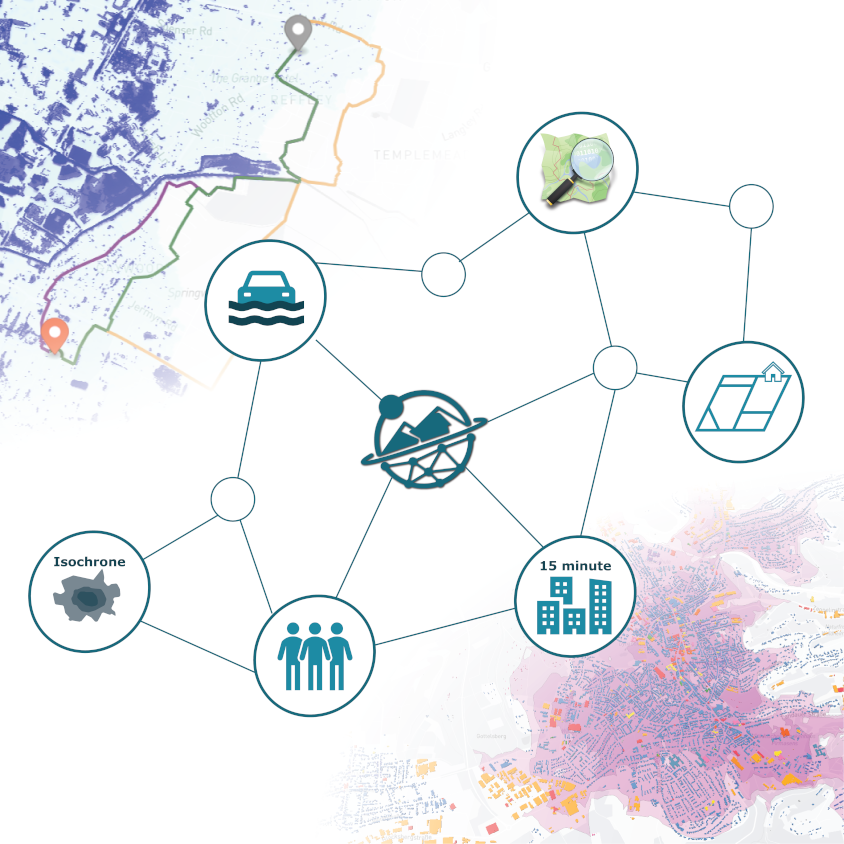Technical Report 320, c4e-Preprint Series, Cambridge
Fostering Urban Resilience and Accessibility in Cities: A Dynamic Knowledge Graph Approach
Reference: Technical Report 320, c4e-Preprint Series, Cambridge, 2024
- Development of versatile tool for disaster and city planning.
- Disaster response system that focuses on static and dynamic planning through agents interplay.
- Holistic 15-minute city planning by status quo monitoring and scenario planning.
- Cross-domain analyses in planning via the integration of complementary data sources.
 This paper explores the utilisation of knowledge graphs to enhance urban resilience and accessibility in city planning. We expand The World Avatar (TWA) dynamic knowledge graph to support comprehensive decision-making in disaster response and urban planning. By employing an agent-based implementation approach and integrating diverse data sources—including flood data, geospatial building information, land plots, and open-source data—through sets of ontologies, we demonstrate disaster response in a coastal town in the UK and various aspects relevant to city planning for a mid-sized town in Germany using TWA. In King’s Lynn, our agent-based approach facilitates holistic disaster response by calculating optimal routes, avoiding flooded segments dynamically, assessing infrastructure accessibility before and during a flood, identifying inaccessible population areas, guiding infrastructure restoration, and conducting critical path analysis. In Pirmasens, for city planning purposes, the knowledge graph-driven isochrone generation provides evidence-based insights into current amenity coverage and enables scenario planning for future amenities while adhering to land regulations. Additionally, it facilitates cross-domain correlation analysis and provides demographic insights through the representation of building information, isochrones, and population density using ontologies.
This paper explores the utilisation of knowledge graphs to enhance urban resilience and accessibility in city planning. We expand The World Avatar (TWA) dynamic knowledge graph to support comprehensive decision-making in disaster response and urban planning. By employing an agent-based implementation approach and integrating diverse data sources—including flood data, geospatial building information, land plots, and open-source data—through sets of ontologies, we demonstrate disaster response in a coastal town in the UK and various aspects relevant to city planning for a mid-sized town in Germany using TWA. In King’s Lynn, our agent-based approach facilitates holistic disaster response by calculating optimal routes, avoiding flooded segments dynamically, assessing infrastructure accessibility before and during a flood, identifying inaccessible population areas, guiding infrastructure restoration, and conducting critical path analysis. In Pirmasens, for city planning purposes, the knowledge graph-driven isochrone generation provides evidence-based insights into current amenity coverage and enables scenario planning for future amenities while adhering to land regulations. Additionally, it facilitates cross-domain correlation analysis and provides demographic insights through the representation of building information, isochrones, and population density using ontologies.
PDF (15.7 MB)



